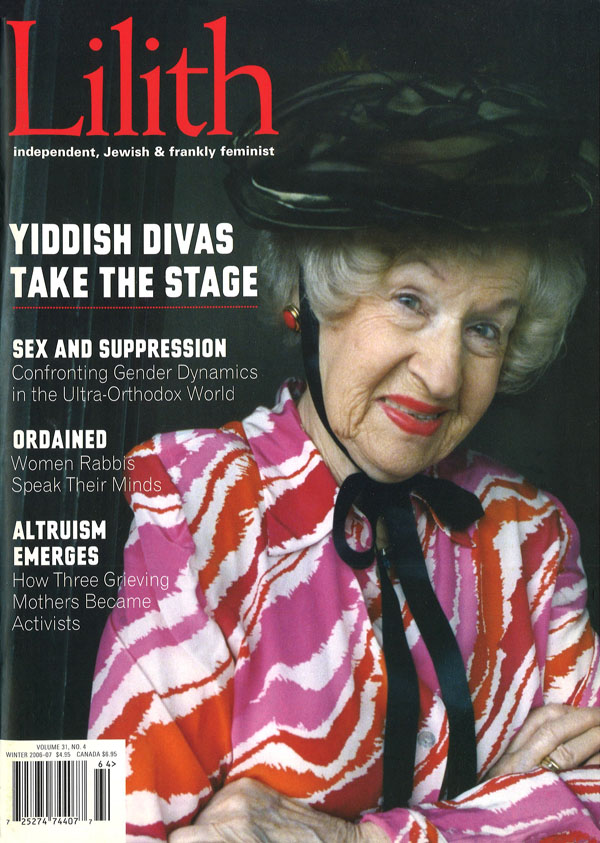Lilith Feature
Losing a ChildHow grief has fueled three mothers' activism

Stars of Yiddish stage who are still wooing audiences. Sex and suppression in ultra-Orthodox communities. How three grieving mothers became activists. Women rabbis speak their minds.
Table of contents Get the issueA photo essay spotlighting stars of the Yiddish stage, who in their 80s and 90s still woo and wow audiences.
The unconscious projections people often made, imagining that God looked something like their older bearded grandfatherly rabbi, couldn’t happen with a woman rabbi. It followed that the masculine metaphors of... Read more »
We were more accidental than intentional revolutionaries. We did not understand then that when you start out as the “first” anything, you always remain the “first.” If you were the... Read more »
My mother answered, “I don’t know what other land she could be.” I recall visiting a patient when I worked as a hospital chaplain, hearing “You’re a rabbi, but you... Read more »
As I wrote to Sally Priesand years later, it was that famous (infamous?) article from the New York Times in the Spring of 1972, entitled “Her Ambition Is to Become... Read more »
Somehow the feeling permeated the halls that I was a rich, bored housewife who would not be up to completing the first-year program. (I was greeted upon my arrival at... Read more »
Indeed, those were the days. The days when, for my first seminary year, I was the only woman in the rabbinic program at HUG in Cincinnati. The days when Alvin... Read more »
Some synagogues refused to interview me, others wanted me for my publicity value and still others wanted to be able to say they were the first to hire a female... Read more »
Susan Schnur: Rochelle, how did this journey begin? My son Aron was 25, two weeks away from graduating from medical school. After his final rotation—he was volunteering at Hadassah Hospital... Read more »
Susan Schnur: Tell us about Adam, and about what it meant to care for him. Adam was diagnosed in infancy with a large brain tumor. We were told he had... Read more »
I interviewed Ruth Schulman on November 2—the 11th of Heshvan—the date of her daughter Amy Adina’s yahrtzeit. It had been 20 years since Adina, an undergraduate at Rutgers, died. She... Read more »
Generations of educated religious women, who love to live at the edge of tradition.
Jimmy Swaggart broadcast the message on t.v. this morning in ail fifty states plus Canada, that if a gay man ever looks at him like that, he’s going to kill... Read more »
The author examines communities where women and men must walk on separate sides of the street, where long aprons for maids are required, and where underground struggles over allegations of abuse are causing explosive turmoil.